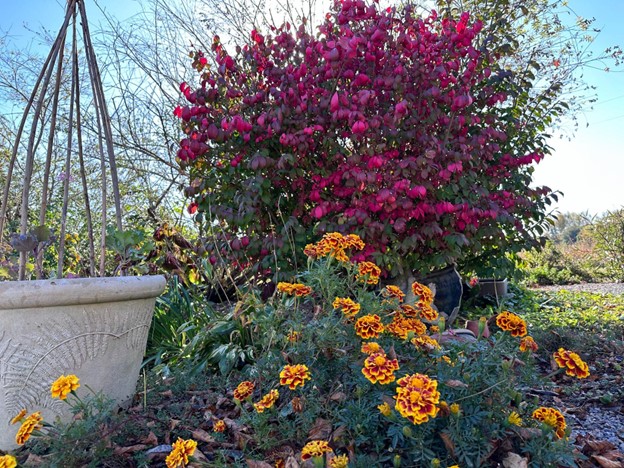October has come to the garden. It seems like it arrived more quickly this year than last. And it looks like we’re going to have one of the most beautiful years for fall foliage.
Here at the farm, we’re already thinking spring. But as I’ve mentioned in previous blog posts, each season comes with its own set of duties to ensure continued garden success in the seasons ahead.
With that being said, let’s focus on what needs to happen in the October garden. We need to plant for spring, create conditions for extending the current season and prepare for winter.
Plant for Spring
- Sow cool annual seeds while the ground is still warm.
- Plant berry bushes, fruit trees, perennials and cool annuals for spring bloom.
- And, of course, plant bulbs. October is THE month to plant bulbs. You can liven up your spring garden and landscape by planting more and more bulbs each October. There are so many different styles and colors of alliums, crocus, daffodils and tulips. And there are a variety of ways to plant them—as singles, in clumps or in large drifts. Just imagine the possibilities!
Extend the Season
Prepare to keep gardening during the winter by creating a cold frame to protect crops. Depending on your USDA gardening zone and what you want to grow, you can continue to enjoy fresh, homegrown produce even during the coldest season of the year.
Stay tuned. I’ll be writing an entire blog post on how to build and use a cold frame. Until then, you might want to do some online research and start thinking about items you have around your home that you could use for a cold frame. By doing a bit of research now and gathering materials you might be able to use, you’ll be ready to build a cold frame before the weather turns too frigid for working outside.
Prepare for Winter
- Harvest everything that still has life. This includes blooms, fruits and veggies.
- Cut spent flowers but leave some seed heads for overwintering birds to feed on.
- Add non-diseased garden debris to the compost bin.
- Remove diseased, mildewed or rotten foliage and discard as garbage. Do not add this debris to your compost bin.
- October is the perfect time of the year to improve soil for the next growing season. With the aid of a garden tool, work in soil amendments to future active gardens.
- Spread mulch on your garden. Mulch helps prevent erosion during winter and helps preserve the life of tender perennials and cool annuals.
- Empty all your ceramic, clay and terra cotta planters. Clean the planters with warm water to remove any possible pests or disease. When dry, store them in a potting shed, garage or other safe place. If you leave the planters outdoors, they may crack with the freeze-thaw cycle of winter. And don’t stack them inside each other because they’ll be likely to expand, which will make them difficult to separate come spring.
May October bring you the joy of a beautiful fall garden. Happy Gardening!
Pamela Anthony
Beehind Thyme Farm & Garden

